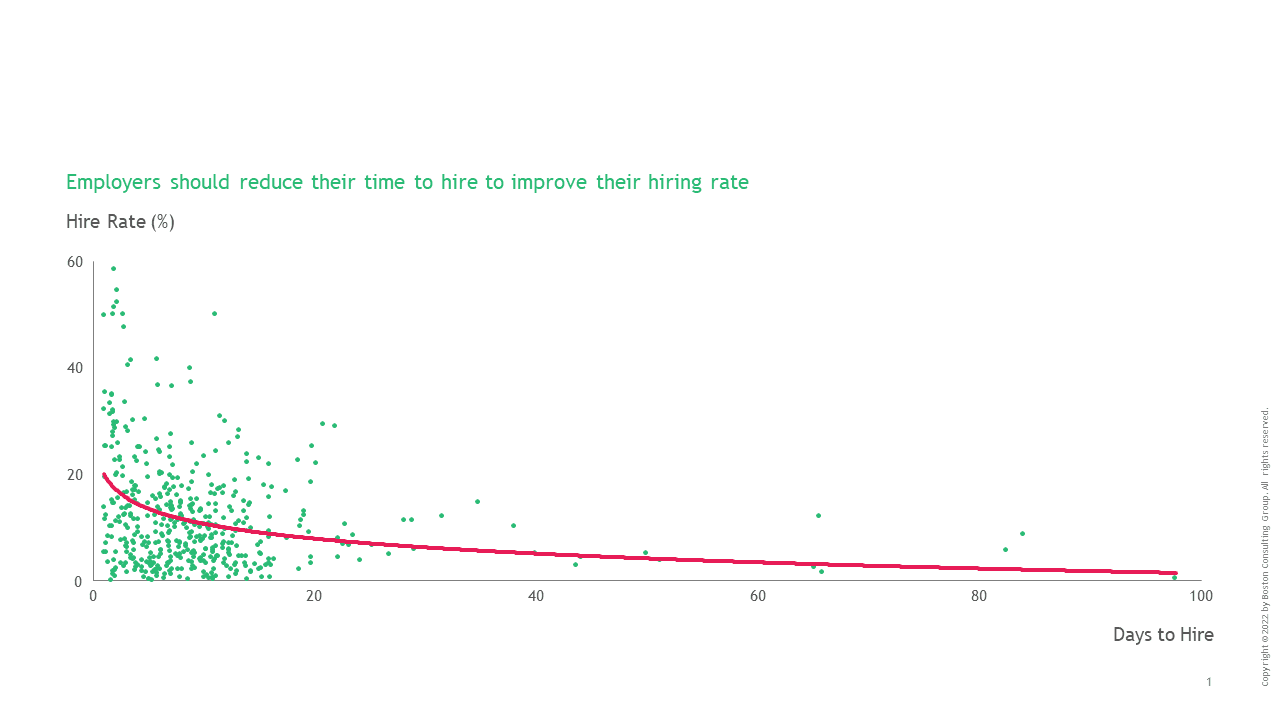This is according to a report by BCG and Fountain.
The 'Great Resignation' is going nowhere, particularly for the retail, leisure, and hospitality sectors.
Find out why frontline employers need to think long-term.
Are you ready to switch things up?
The ‘Great Resignation’ is real in the US. Employees are leaving jobs en masse and looking for new, better opportunities elsewhere.
A lot of the media coverage of the exodus of talent has focused on white-collar workers, but in fact, the majority of the turnover is in service sectors, like retail, hospitality, and leisure. These are also the industries that were most impacted by lockdowns and social distancing requirements implemented because of the pandemic.
To try and attract talent, many frontline employers raised wages, increased paid time off, and better benefits. These short-term approaches primarily aimed to help companies survive the busy Christmas and Thanksgiving holiday periods at the end of last year.
But the ‘Great Resignation’ is showing no signs of letting up. Every month since July, the US has seen more than four million workers quit their jobs. Currently, there are 10.6 million active job listings, and the US has a net labor shortage of 4.3 million, according to the Boston Consulting Group (BCG).
So BCG, in collaboration with hiring volume hiring tech company Fountain, has explored the data to figure out what long-term solutions employers need to implement if they want to survive and thrive amid the current labor market challenges.
BCG analyzed data from 37 million hourly worker applications and concluded that while there is no silver bullet answer, there are few techniques that frontline employers can embrace if they want to hire effectively in 2022.
First, frontline employers need to speed up their hiring processes. Fountain’s data showed that the shorter the time between the interview and the job offer, the better. Job offers that took less than seven days led to 80% more hires, and for every day that companies could shave off, the hiring rate improved.

The issue is that the best candidates are applying for lots of jobs at once, so employers need to be quick if they want to beat out competitors.
BCG also concluded that companies need to meet job seekers where they are at – their mobile phones. 84% of hourly workers applied for jobs on their smartphones; this is a 200% increase on 2015 data.
The report suggests that it is important that the mobile process is end-to-end – it is important that candidates don’t need to switch between different devices. Tech like Fountain and Talview provide this offering to employers and candidates.
If the application process is too burdensome, then candidates will just apply elsewhere.
Fountain CEO Sean Behr tells UNLEASH: “Your job candidates are demanding technology that speeds the hiring process.
“They want to apply by mobile device; they want an instant interview; they want to know you’re interested, and they expect a job offer in hours — even minutes.
“That’s the new normal for hiring hourly workers. And if you can’t deliver the speed they need, your best future employees will go to your competitors.”
Third, BCG and Fountain found that job postings need to clearly state their benefits. 46% of job adverts currently don’t do this, according to Fountain’s data. But mentioning biweekly pay saw a 34% increase in hiring rate, mentioning medical leave caused a 27% growth and paid time off saw a 25% hike.
This was emphasized in a recent UNLEASH interview with Indeed’s Raj Mukherjee. He noted that any perks need to be obvious in job description, “Our research shows that 96% of those [who] added perks and benefits” have successfully attracted candidates.
However, BCG warns that companies must be careful about only offering these benefits to new hires – if they want to retain their existing talent, and avoid the mass exodus, they also need to rethink their perks for existing employees.
The best thing to do with perks, according to BCG and Fountain, is to try things out and change based on data and return-on-investment.
Don’t just assume you know what types of perks people want – ask candidates what perks they want to see and what impact perks had on them on accepting or refusing your job offer.
The report states: “The most successful companies employ a “test-and-learn” approach on these requirements, measuring volume, quality, yield, and (eventually) retention to continuously fine tune their requirements.”
This is where proper data and analytics platforms can really come into their own to support employers – examples include Talentlyft, Datapeople, and Phenom.
Are you ready to listen to the data and look more long-term in your talent attraction and retention approach?
Get the Editor’s picks of the week delivered straight to your inbox!

Chief Reporter
Allie is an award-winning business journalist and can be reached at alexandra@unleash.ai.
"*" indicates required fields
"*" indicates required fields